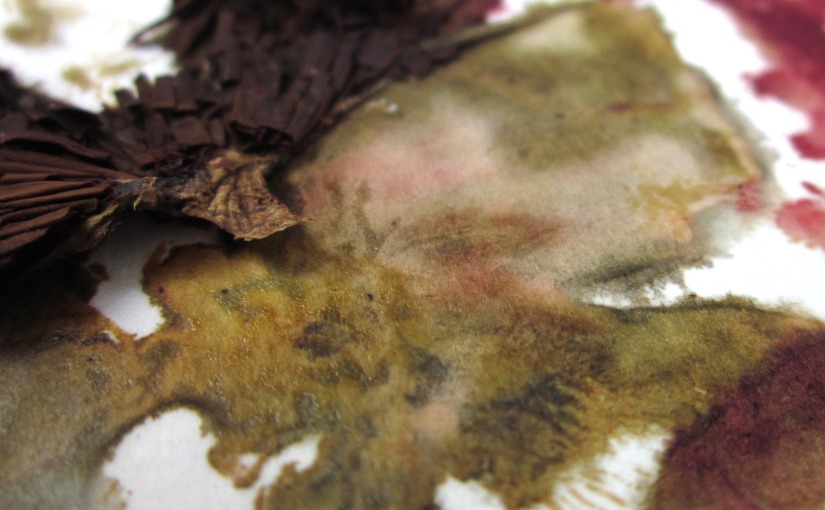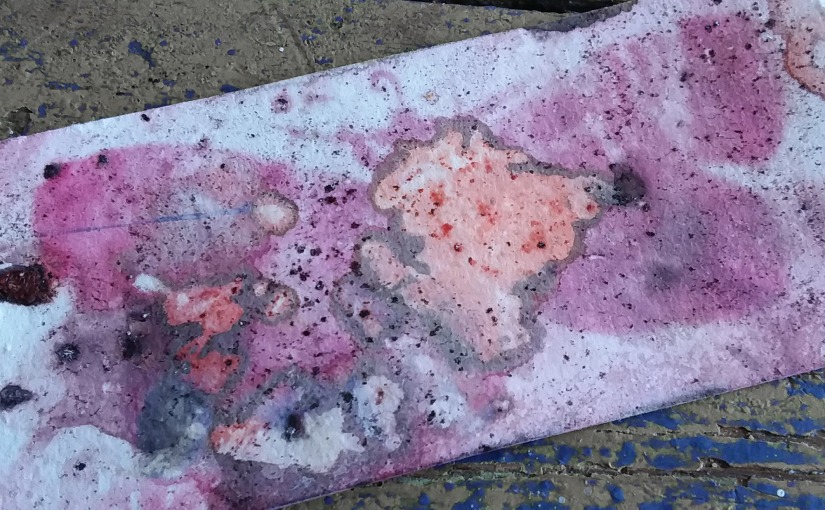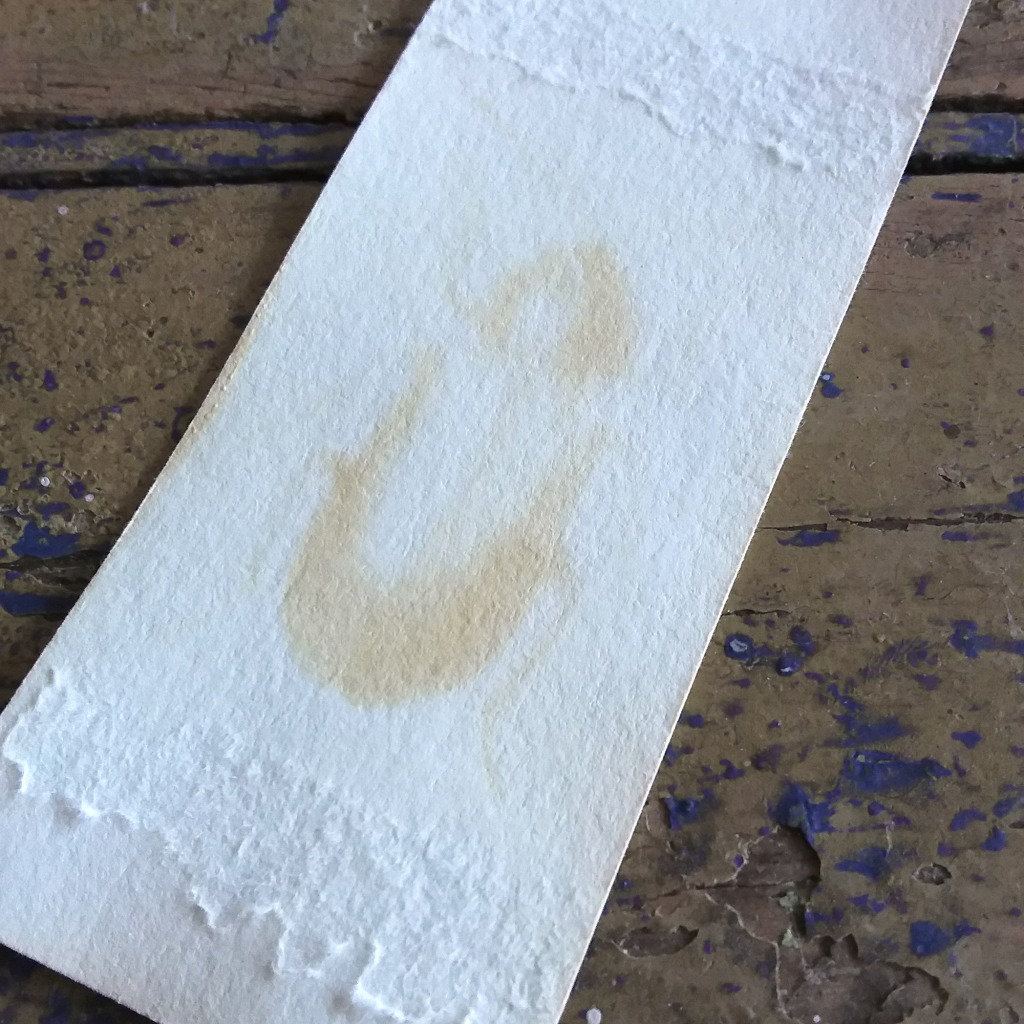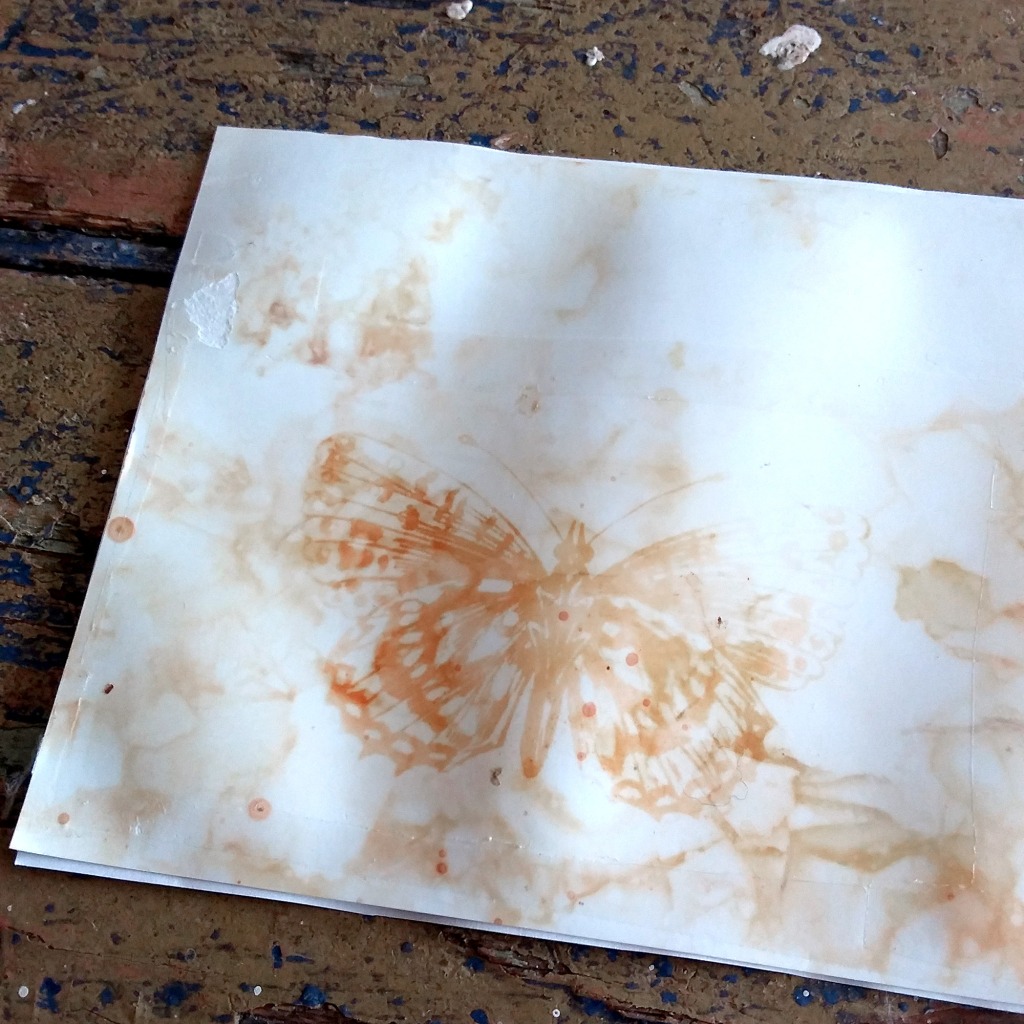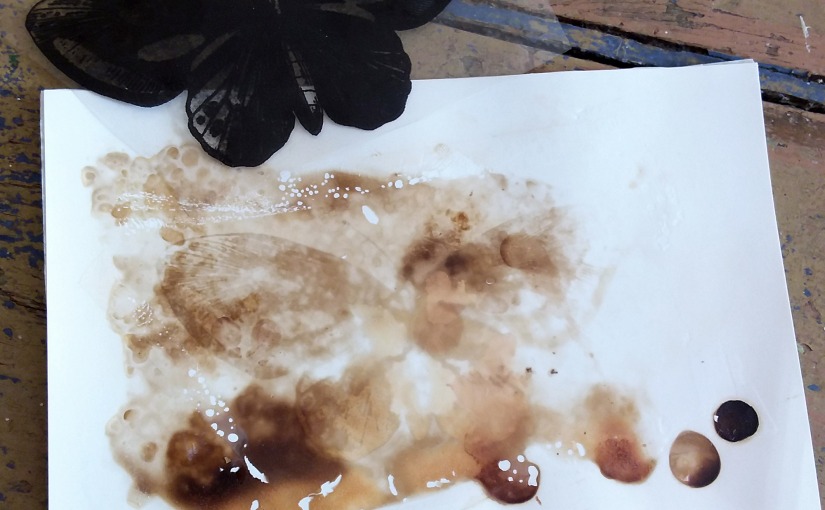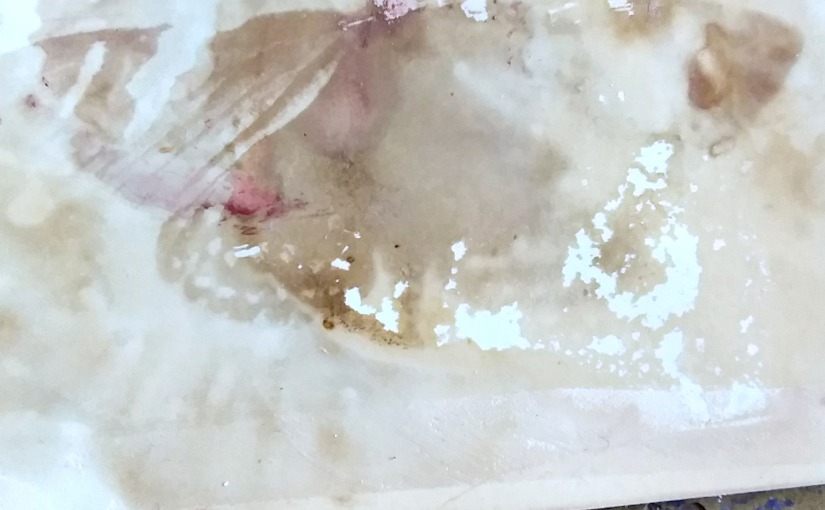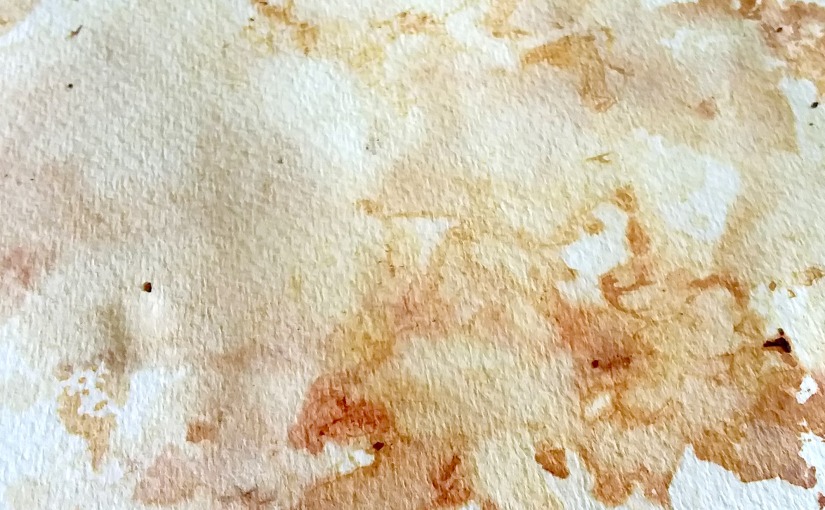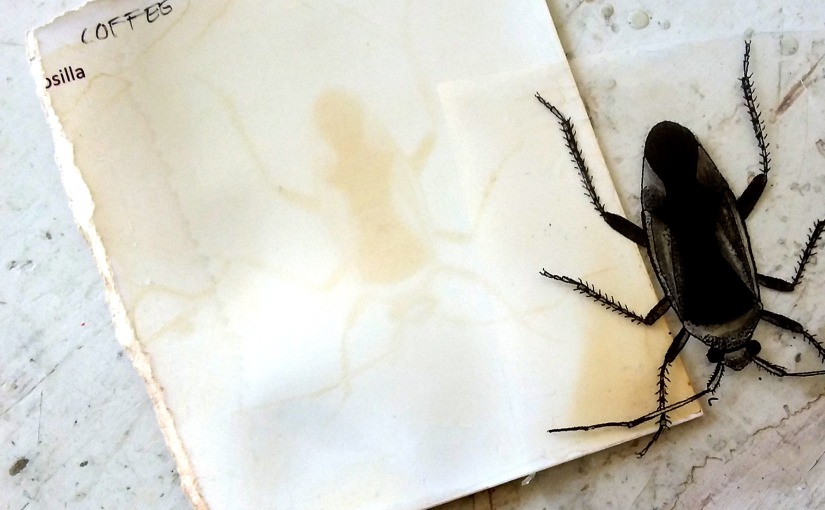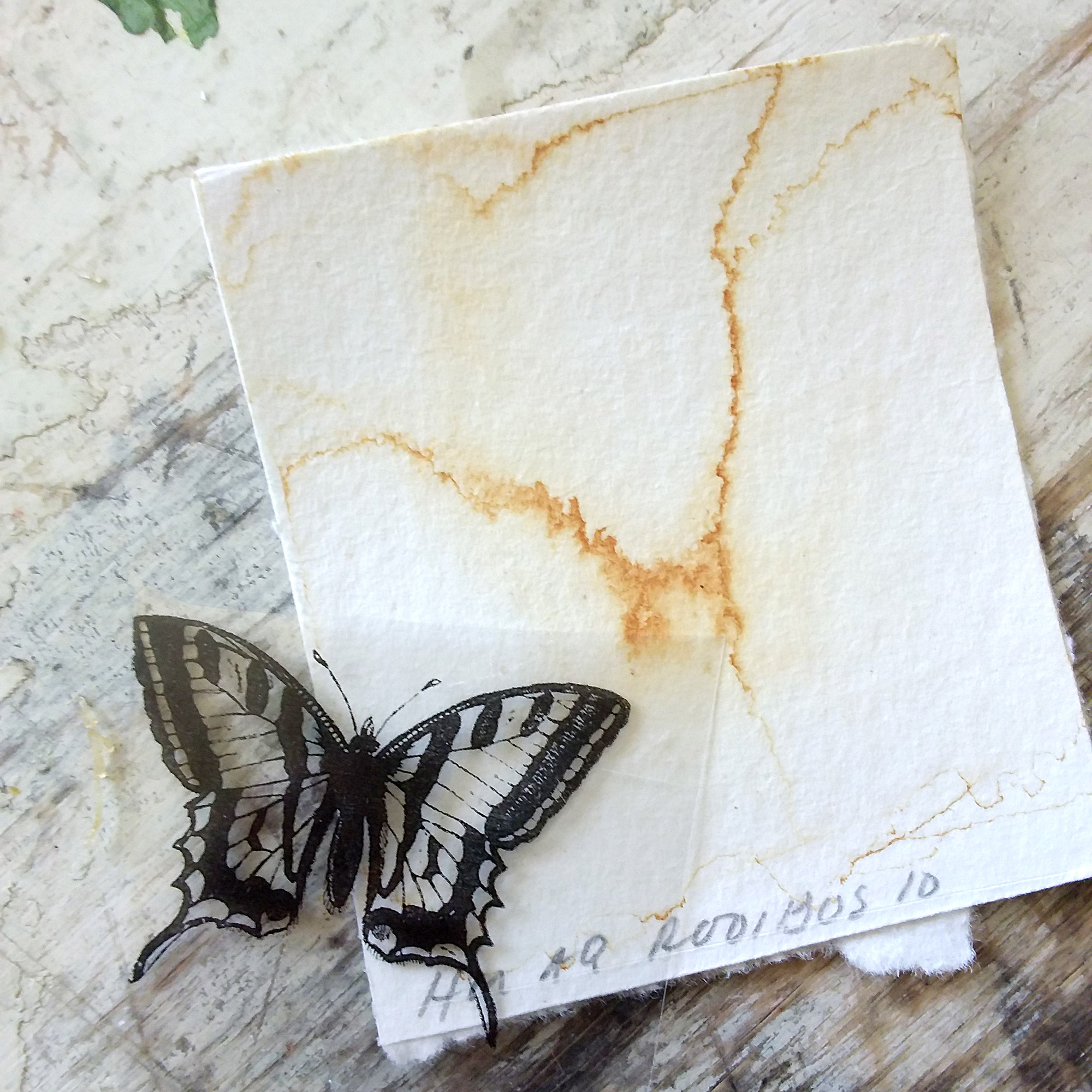Staining the papers by laying dye materials upon it for over night works well with several materials, and it’s worth while if you wish to make uneven, texturized papers, and with some materials and dye matters also by imprinting the texture of the material. The featured photo, and all the other webcab photos in this page, are from 2011, when I started to stain papers with bloodred webcaps (Cortinarius sanguineus, or Dermocybe sanguineus) and surprise webcaps (Cortinarius semisanguineus, or Dermocybe semisanguineus).
The process is pretty easy: the moist dye matter is simply set upon a moist paper, they are covered with plastic (to keep the whole thing from drying), and some weight is put upon them for the print to attach. Let it be over night. More detailed instructions can be found for example in the Sweet Waste Dyes guide which can be freely download at suloisiavareja.wordpress.com site.
In this technique the papers are not boiled or even heated, so it is very suitable for even the most delicate and thin papers.
And, in this technique the paper used and also the amount of moisture used affects on how the print will look like.
With moist dye stuff but pretty dry paper, especially the glossy photo printing papers will make sometimes very detailed imprints, but when there is more moisture, the results may be very aquarelle-like, and even something that looks very three-dimensional. Depending, of course, also from the paper brand. (Below is an anthotype print made on red onion skins contact stained glossy photopaper.)
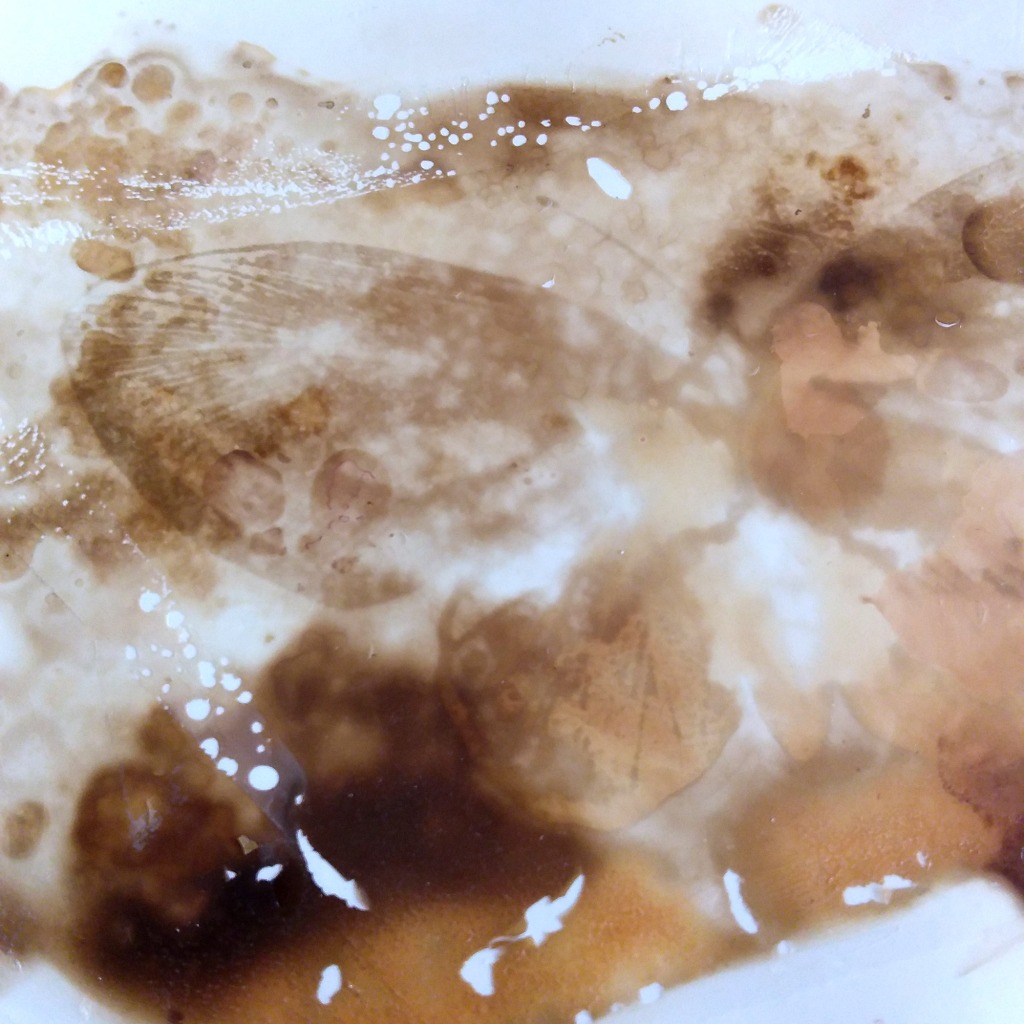
Using more soft papers (like aquarelle papers) and lots of water, will provide less-detailed, aquarelle-like surface like in this paper stained with mushrooms in 2011.
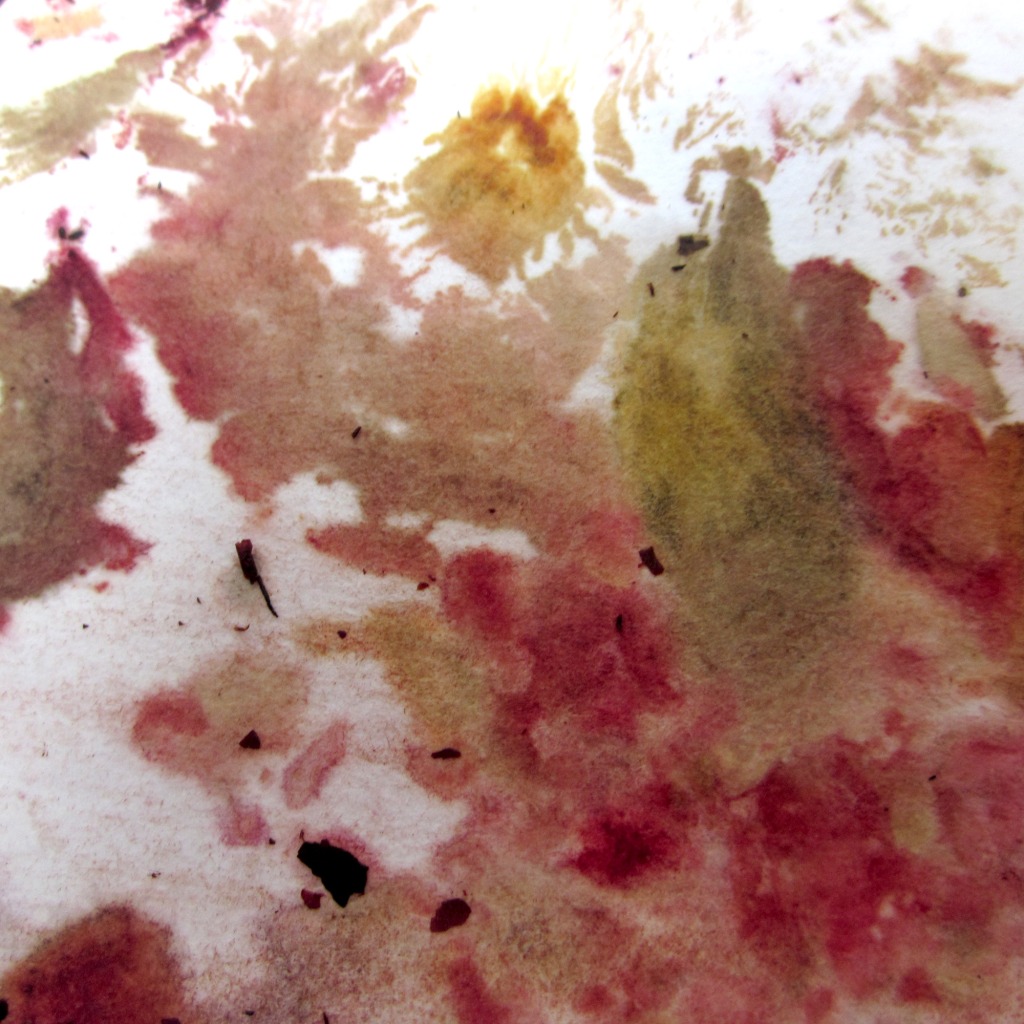
…Or, you can try to adjust the moisture levels and create both aquarelle-like and detailed prints on the same paper, as in this mushroom example below. On the left side of the paper both the paper and mushrooms were very wet, but on the down right corner you can see, what happened, when the paper was only slightly moistened and moist mushrooms were laid upon it.

The best papers for contact printing depends on what you want, really. I have tried out several papers, and I can say only, that every one of them works out differently. You just have to try out the best way to work with each one.
